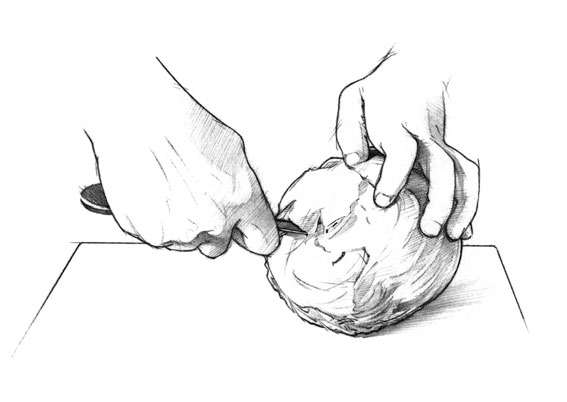Utility knife
The utility knife is used less often than the paring knife, but it plays the role of the in-between knife. It does those odd tasks that are too small for the chef’s knife and too big for the paring knife, like taking the core out of a cabbage (or a cauliflower). To do so, pierce the cabbage and carefully move the knife slowly alongside the core. After each downward slice — with your guide hand on the cabbage above the knife, out of the path of the blade — stop, rotate the cabbage a quarter turn, and slice again. Repeat. This is a slow process, as the core can be quite dense. If you try to do this quickly, then your knife will probably slip and the tip can break off.
Other uses for a utility knife include carving roasted poultry or cutting the ends off onions, then peeling them. Or, it might be the knife closest at hand, and you want to slice a tomato or cut the peel and pith (the white inner layer) off an orange. It’s also very good for slicing small blocks of cheese.









